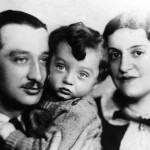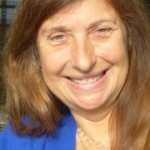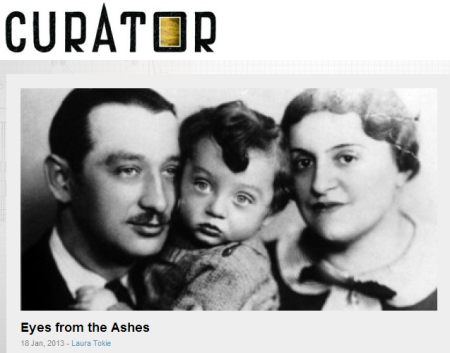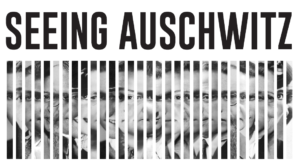Media

Why there is no holiday more tragic than Lag B’Omer for my family
May 19, 2022
Lag B’Omer is traditionally a happy festival when Jews celebrate with bonfires and picnics, but I have always known it as the day when most of my mother’s family was murdered.
On January 27, 2020–on the 75th anniversary of the liberation of Auschwitz-Birkenau—a special exhibit “Seeing Auschwitz” premiered at the United Nations. I was lucky enough to be with Paul Salmons, its chief curator, as he walked a small group through his very moving exhibit. Now his tour can be shared with you. I was very surprised—and also very honored—to see photos from our “Eyes from the Ashes” collection included in this small but important “Seeing Auschwitz”. **
I think you’ll be interested in hearing my esteemed colleague’s focus on the humanity of the people, who became casualties of the Nazi regime.
Click on the image below to see the video
There is an extraordinary exhibit in New York City at the Museum of Jewish Heritage, titled “Auschwitz—Not Long Ago, Nor Far Away.” I am honored to have my photos included (see blog Spring 2019) in this tremendous exhibition, organized by the Auschwitz expert, Robert Jan van Pelt.
This exhibit will be on display from May 8, 2019 (which is the anniversary of VE / Victory in Europe in 1945) until Jan 3, 2020. This article below gives you a taste of the scope and depth of this superb exhibition.
The Horrors of Auschwitz at a Museum in New York (NY Times)

How Ann Weiss Restored Humanity to the Victims of Auschwitz
Paul JablowApril 29, 2015
In October of 1986, as a delegation of Jews active in community affairs toured a closed Auschwitz-Birkenau, investigative journalist Ann Weiss fell behind the others.
![]()
‘Eyes from the Ashes’ honors Holocaust victims, survivors
Click on the above link for this story

Change Honors 70th Anniversary of Auschwitz Liberation
Click on the above link for this story

Photos reveal lives loved, lost in Holocaust
Amy Bennett Williams, awilliams@news-press.com 8 a.m. EDT October 9, 2014
 It’s as clear to me now as it was when I was 12: A grainy shot of a huge bulldozer crawling forward with the occasional lurch, its huge scooped blade pushing a dark load toward a trench. The camera angle changes. The machine is not shoveling snow or earth, but a tangled hill of limp bodies, pushing them as a mass. Yet as heap reaches the brink and tumbles over, they separate, each falling alone into the darkness below.
It’s as clear to me now as it was when I was 12: A grainy shot of a huge bulldozer crawling forward with the occasional lurch, its huge scooped blade pushing a dark load toward a trench. The camera angle changes. The machine is not shoveling snow or earth, but a tangled hill of limp bodies, pushing them as a mass. Yet as heap reaches the brink and tumbles over, they separate, each falling alone into the darkness below.
I don’t think my visual introduction to the Holocaust was much different from that of other schoolkids of my vintage. Sure, we learned the facts, memorized the dates and took the tests, but what stayed with us was the sheer, staggering size of the thing. All those people — thousands and millions of them.
The problem is that numbers that big can become abstract. When you’re staring at a literal hill of dead humans, it’s hard to distinguish features. That by no means diminishes the tragedy, but you process that sort of thing one way. And you process what Ann Weiss has done another way.
 Ann Weiss will speak at the opening of her exhibit at the Holocaust Museum in Naples What the Pennsylvania author, photojournalist, teacher and mother has to show us is anything but abstract. Her traveling exhibit, “The Last Album: Eyes from the Ashes of Auschwitz-Birkenau,” opens with a gallery talk Sunday at the Holocaust Museum in Naples. It’s a collection of perfectly ordinary photos: toddlers playing on the beach, newlyweds raising a toast, class pictures, family dinners. What makes these images extraordinary is that they contain the faces of the dead while they were still robustly alive.
Ann Weiss will speak at the opening of her exhibit at the Holocaust Museum in Naples What the Pennsylvania author, photojournalist, teacher and mother has to show us is anything but abstract. Her traveling exhibit, “The Last Album: Eyes from the Ashes of Auschwitz-Birkenau,” opens with a gallery talk Sunday at the Holocaust Museum in Naples. It’s a collection of perfectly ordinary photos: toddlers playing on the beach, newlyweds raising a toast, class pictures, family dinners. What makes these images extraordinary is that they contain the faces of the dead while they were still robustly alive.
Read the entire article
Eyes from the Ashes article by Andrea Jacobs wins top Journalism award!
The Intermountain Jewish News won six Simon Rockower Awards for Excellence in Jewish Journalism at the American Jewish Press Association’s annual conference June 27-30 in Dallas, Texas. Among these awards was Andrea Jacobs, first place in feature writing, “Eyes From the Ashes” (Feb. 19, 2010), on Ann Weiss’ accidental discovery of pre-Holocaust family photographs in a locked room at Auschwitz.
CLICK TO READ the winning feature article of the year, “Eyes From the Ashes” by Andrea Jacobs.

Here is January 2013 article in CURATOR Magazine, written by Laura Tokie, describing a series of photos of the Huppert Family, on exhibit in Detroit Holocaust Museum until March 2013. To read the full article CLICK HERE
The Holocaust Memorial Center in Farmington Hills, Michigan helps visitors remember. Its appearance and placement in the community, with architecture echoing a concentration camp, fully visible from a busy street, flanked by a bank and a Chinese restaurant, challenges passerbys to consider the horrors of the Holocaust in the everyday. It houses a permanent exhibit exploring Jewish history and culture prior to World War II. Area Holocaust survivors speak to tour groups. And the special exhibit The Last Album: Eyes from the Ashes at Auschwitz-Birkenau gives visitors other images to consider, images that didn’t matter to the Nazis, images that tell us what, and who, the people victimized wanted to remember.
To curate, in its most old-fashioned sense, means more than gathering a collection. The word implies a sense of care. In 1986, Ann Weiss separated from her guided tour group at Auschwitz I. She wanted silence, and took some time before seeking to rejoin the group. When she began looking for them, she got lost. She could hear voices, but could not see them, when she encountered an employee. The employee invited her to see something not on the tour: a collection of about 2400 photographs. The pictures were not of abuses. They were not from the Nazi perspective, officially or unofficially. They were the spared mementos of prisoners, specifically from the people in the final liquidation and deportation of the Bedzin ghetto, August 1-3, 1943.
From that moment forward, Weiss began to care for the photographs. She sought to copy them and bring them to the light; she sought people who might remember those in the pictures. She gathered stories and made connections. Her work is collected in a book, and in this traveling display. By curating this collection, Weiss gives the viewer a chance to acknowledge a fuller reality surrounding the Holocaust.
The exhibition includes sweethearts and couples, portraits of children, friends walking together, people visiting resorts. Some of the people have been named, including eight pictures grouped together with the title The Huppert Family. In this portion of the exhibit, we learn that Artur, Grete, and their son Peterle sent notes and pictures to Artur’s parents. We see an artful picture, “The Triple Exposure of Artur Huppert,” a picture of Artur and Grete at their wedding celebration, two pictures of Artur and Grete with their son, Peterle, when he was 16 months old. Between the pictures of the family sit three portraits of Peterle at 16 months, with a beautiful head of curls.
The eighth picture in the Huppert family collection features a delighted Artur kneeling behind Peterle. Together they hold picture frame containing two portraits: Josef and Rosa Huppert, Artur’s parents.
The direct impact of the Holocaust on Artur, Grete and Peterle is told in the captions near the photos. It is recorded that Artur and Grete do not survive their transport to a slave-labor camp. Peterle was on the same transport as his mother, and his fate went unrecorded.
The pictures were brought to Auschwitz with love. It is love that makes them familiar to us. The viewer is invited to think beyond the violence, remember this common bond, and imagine afresh the loss. As Leon Wieseltier writes in the foreword to Weiss’ book:
“The greatest enemy of abstraction is suffering. … Pain is always endured in the particular. Suffering is always experienced concretely; and this experience of concreteness, this transforming encounter with facticity, humbles the mind, and disgusts it, and stimulates within it the sobering suspicion that its most strenuous task is not the development of ideas, but the acknowledgment of realities.” (6)
***
Along with the three portraits of Peterle, the following words (translated) were sent:
“As pretty as the moon, and we will all see each other again very soon, in freedom, in health, when all this is behind us. Love, your grandchild, until 120 (years).”
If only. If only Peterle had lived to be 120, a phrase evoking Moses and his good lifespan. If only the world had not known such cruelty and violence. If only the Huppert family album continued. The viewer is left to ponder not just the culture lost, and the lives lost, but the future lost.
And yet. The display calls us beyond loss, to remember something else too, to not let evil and death have, in the exhibit’s words, “the final punctuation.” It asks us to end the sentence with life.

Ann Weiss celebrates lives cut short too soon
Ann Weiss became lost while touring Auschwitz, one of history’s most horrific places, and it was a misstep that put her on a remarkable path of discovery. She became connected to a generation and to a culture that was almost entirely destroyed by hatred and intolerance.
CLICK HERE TO READ THE ARTICLE

Life before Auschwitz: Finder of rare photographs visits Bates College
Published on Tuesday, Nov 8, 2011 at 12:12 am | Last updated on Tuesday, Nov 8, 2011 at 12:12 am
LEWISTON — Ann Weiss, who discovered at Auschwitz a cache of photographs from the lives of Jewish victims before they arrived at the death camp, will speak at Bates College at 7 p.m. Monday, Nov. 14, at the Edmund S. Muskie Archives, 70 Campus Ave.
Confiscated from Jews deported to Auschwitz in 1943, the images reflect the memories that men and women sent to Auschwitz could not leave behind. A unique testament to the vitality of the victims’ lives, these photos are the only known surviving collection from a whole transport to a concentration camp.
At Bates, Weiss will discuss her discovery of the photographs and the journey culminating in their publication in her 2001 book “The Last Album: Eyes from the Ashes of Auschwitz-Birkenau.”
The event is open to the public and will be followed by a book signing. For more information, please contact 755-5980.
In contrast to the Holocaust images embedded in our minds, these extraordinary photos provide an intimate and compelling record of who the Nazis’ victims were, whom they loved and what mattered most to them.
Weiss discovered the collection of more than 2,000 photos by accident during a group tour of Auschwitz in 1986. She has traveled the globe researching the stories behind the photos. Her journey has taken more than 20 years, including many visits to Poland to secure permissions and copy the photos, and far-ranging travels to reunite photos with remaining family members. Whenever a story was matched to a face, an identity was restored.
“Survivors have always told me how their loved one died, but I would ask a new question, ‘How did they live?’ ” says Weiss. “And even when no survivor remains to tell the story, it is the photos themselves, and the eyes, that reveal their own powerful testimony.”
The photographs are the basis for touring exhibitions and a 1988 documentary film, “Eyes from the Ashes.” The images have been displayed around the world including an exhibit at the Wiesenthal Center/Museum of Tolerance in Los Angeles.
Weiss is a principal interviewer, researcher and analyst for The University of Pennsylvania’s “Transcending Trauma: Psychological Mechanisms of Survival” project, which has interviewed Holocaust survivors in the most detailed interview protocol to date.
She serves on the editorial board of the “Studies in the Shoah” series of history books, and has served as a trained interviewer for the Survivors of the Shoah Visual History Project, founded by director Steven Spielberg.
She is the founder and director of the Eyes from the Ashes Foundation, an educational organization.
CLICK TO READ ON THE MAINE SUN JOURNAL WEBSITE
![]()
To read article in Twin City, Maine on Dec.1, 2011, click here

